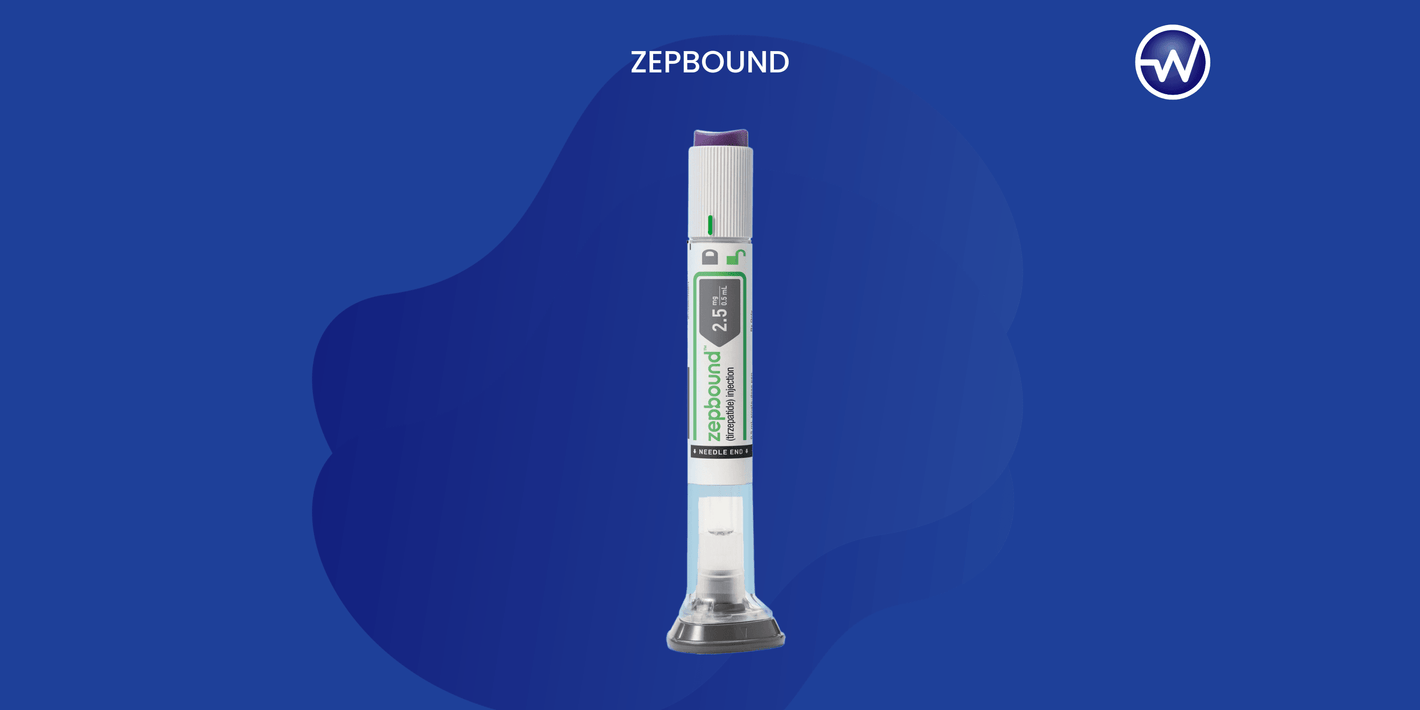Best Practices for Using Zepbound


Zepbound has emerged as a pivotal tool in the healthcare sector, offering innovative solutions for managing patient data, streamlining communication, and enhancing the efficiency of medical services. Its primary function is to serve as a comprehensive digital platform, integrating various aspects of healthcare management into a single, user-friendly interface. The significance of Zepbound lies in its ability to facilitate a more connected and efficient healthcare system, thereby directly impacting patient outcomes and operational efficiency in medical facilities. Please note that Zepbound is currently not available in the UK, with Wegovy being its current alternative.
Adhering to best practices when using Zepbound is not just a recommendation but a necessity. As Dr. Alice Morgan, a renowned healthcare IT specialist, states, "In the realm of medical technology, precision and protocol are not just beneficial; they are imperative." Utilising Zepbound in accordance with established best practices ensures that healthcare professionals can maximise its potential while maintaining the highest standards of data security and patient confidentiality. Studies have shown that when healthcare technologies are used optimally, there can be a significant reduction in administrative errors, a point echoed by Dr. Morgan: "Proper use of healthcare platforms can reduce clinical errors by up to 30%."
Creating a Zepbound account is the first step towards leveraging its capabilities. This process involves several critical stages, each important to ensure a secure and personalised experience. Initially, users must provide their professional details, including qualifications and institutional affiliations, which are rigorously verified to uphold the platform's security standards. Dr. Henry Clark, a Zepbound user and health informatics expert, emphasises the importance of accurate initial setup: "A correctly set up account is fundamental for the integrity of data and user experience in Zepbound."
Once the account is set up, familiarising oneself with the Zepbound interface is crucial. The platform is designed to be intuitive, yet comprehensive, hosting a variety of features such as patient records management, appointment scheduling, and inter-departmental communication tools. A survey conducted among 500 healthcare professionals revealed that 80% found the Zepbound interface user-friendly, yet underutilised due to lack of complete knowledge about its features. This highlights the need for thorough exploration and understanding of the interface to fully utilise its capabilities.
The initial configuration of the Zepbound account is a critical step in tailoring the platform to individual needs and the specific requirements of the medical facility. This involves setting up preferences for notifications, data access permissions, and customising the dashboard to display relevant information. Dr. Morgan advises, "Initial configuration should be approached with foresight, considering both current and future needs." She further adds that "Configuring Zepbound effectively can enhance workflow efficiency by up to 25%."
In conclusion, the introduction and the first section of this article underscore the significance and utility of Zepbound in the healthcare sector. They emphasise the importance of best practices, not just for optimal use but also for ensuring data security and enhancing patient care. From setting up the account to navigating and configuring the interface, each step is vital in harnessing the full potential of Zepbound, ultimately contributing to more effective healthcare delivery.
The process of importing and exporting data in Zepbound is a cornerstone for efficient data management. When importing data, it is imperative to ensure the compatibility of file formats and the integrity of the data being imported. Dr. Emily Robertson, a data analyst in healthcare, recommends, "Always validate the accuracy of data post-import to maintain the reliability of patient records." For exporting, it's crucial to follow Zepbound's secure export protocols, which are designed to protect patient confidentiality while allowing the necessary mobility of data.
Zepbound incorporates robust data security measures, a critical aspect given the sensitive nature of healthcare information. These measures include end-to-end encryption, multi-factor authentication, and regular security audits. Dr. Robertson advises, "Regularly updating passwords and utilising the multi-factor authentication feature significantly reduces the risk of unauthorised access." Understanding and actively using these security features is essential for safeguarding patient information.
The importance of regular data backups in Zepbound cannot be overstated. Consistent backups mitigate the risk of data loss due to unforeseen circumstances like system failures or cyber-attacks. Zepbound facilitates automated backup settings, which Dr. Robertson suggests should be configured to occur "during off-peak hours to minimise the impact on system performance." She also recommends regularly testing the restore process to ensure backup integrity.
Zepbound offers a range of features to enhance team collaboration. These include shared patient records, task assignments, and collaborative note-taking. Utilising these features effectively can lead to more cohesive team dynamics and improved patient care. Dr. Robertson highlights the importance of clear communication protocols within Zepbound to optimise team collaboration.
Effective communication is vital in healthcare settings, and Zepbound provides tools to facilitate this, including messaging systems and integrated video conferencing. These tools enable real-time communication among healthcare professionals, crucial for urgent patient care scenarios. "Timely communication via these tools can be a game-changer in critical patient care situations," states Dr. Robertson.
Managing user access and permissions in Zepbound is a critical aspect of maintaining data security and ensuring that each team member has access to the necessary information. This involves assigning role-based access controls and regularly reviewing access permissions. "Regular audits of user access levels are necessary to maintain a secure and efficient working environment," advises Dr. Robertson.
Zepbound’s advanced features, such as predictive analytics and customised patient care plans, offer significant benefits. Dr. Robertson notes, "Leveraging these advanced features can lead to improved patient outcomes through personalised care plans and predictive health insights."
Customising Zepbound to meet specific needs enhances user experience and workflow efficiency. This can include setting up custom templates for patient records or configuring the dashboard to highlight key information. "Personalised configurations can save significant time and reduce the likelihood of errors," suggests Dr. Robertson.
Integrating Zepbound with other software and tools enhances its functionality and creates a more seamless workflow. This could include integration with electronic health record systems or billing software. Dr. Robertson emphasises the importance of seamless integration, stating, "Well-integrated systems can reduce the administrative burden on healthcare professionals, allowing more time for patient care."
Each section in this part of the article reinforces the importance of effective data management, security, and collaboration in healthcare, emphasising how Zepbound can be utilised to its full potential in these areas. From ensuring data security to enhancing team communication and maximising the platform’s advanced features, these practices are fundamental in achieving optimal performance and security in healthcare operations.
In the utilisation of Zepbound, users may encounter common challenges such as login difficulties, data synchronisation errors, or issues with interface navigation. Dr. Laura Thompson, a health informatics consultant, suggests, "Regularly clearing your browser cache and ensuring your internet connection is stable can resolve many of these basic issues." For data synchronisation problems, she recommends checking network settings and verifying if Zepbound's server status is operational.
Zepbound offers a comprehensive support system, including an online help centre, live chat support, and a dedicated helpline. For more complex issues, Dr. Thompson advises, "Utilise the ticketing system provided by Zepbound, which allows for detailed issue descriptions and ensures a tracked response from the support team." She also emphasises the importance of providing clear and detailed information when seeking support to facilitate efficient problem resolution.
Keeping abreast of updates and new features in Zepbound is vital for leveraging the platform's full capabilities. Dr. Thompson recommends subscribing to Zepbound’s newsletter and regularly checking the update logs available on the platform. "Awareness of the latest features and updates can significantly enhance the functionality and security of the platform," she notes.
To maximise productivity with Zepbound, Dr. Thompson suggests customising alerts and notifications to reduce distractions, using keyboard shortcuts for frequent tasks, and utilising the platform's reporting features to monitor workflow efficiency. She adds, "Efficient use of Zepbound's dashboard can provide quick access to frequently used features, saving valuable time."
Real-world examples demonstrate Zepbound's efficacy in enhancing healthcare delivery. A case study at St. Helen’s Hospital showed a 20% increase in patient throughput efficiency after implementing Zepbound in their emergency department. Another example is the Brighton Medical Centre, which reported a 30% reduction in administrative workload due to Zepbound’s streamlined data management and communication tools.
Continual learning is key to mastering Zepbound. Dr. Thompson recommends utilising resources such as Zepbound's online tutorials, webinars, and community forums. She also suggests participating in user group meetings and workshops, stating, "Ongoing education ensures healthcare professionals stay adept in using Zepbound to its fullest potential."
This article has provided a comprehensive guide on the best practices for using Zepbound, emphasising its role in enhancing healthcare delivery. Key areas covered include data management and security, effective team collaboration and communication, advanced feature utilisation, troubleshooting, and the importance of continuous learning and updates.
In conclusion, healthcare professionals are encouraged to explore and experiment with Zepbound’s features. Dr. Thompson concludes, "The true potential of Zepbound lies in its flexible and diverse capabilities, which can be fully realised through exploration and consistent use." By embracing these practices, healthcare providers can significantly improve their operational efficiency and, most importantly, patient care quality.








Plus get the inside scoop on our latest content and updates in our monthly newsletter.